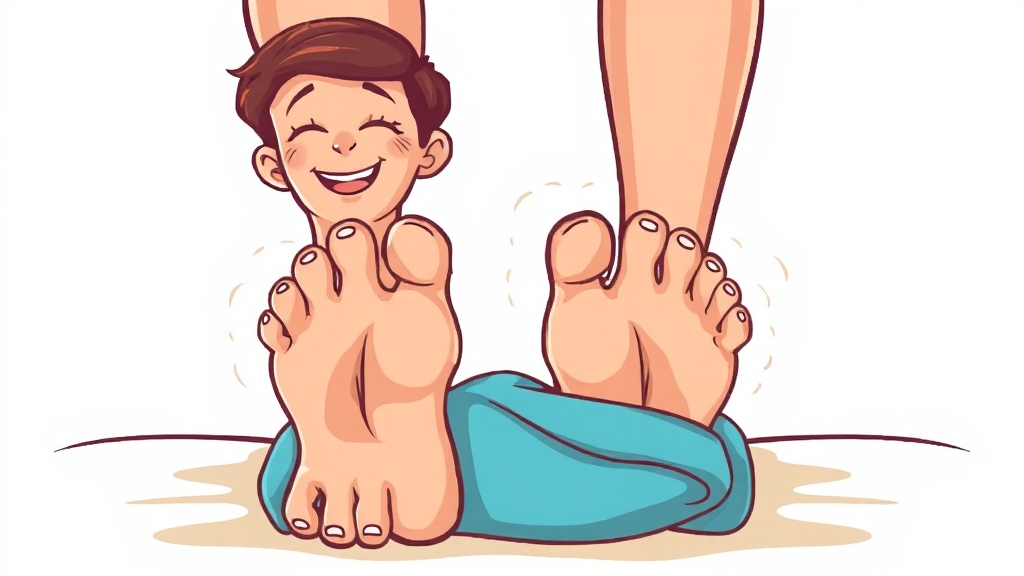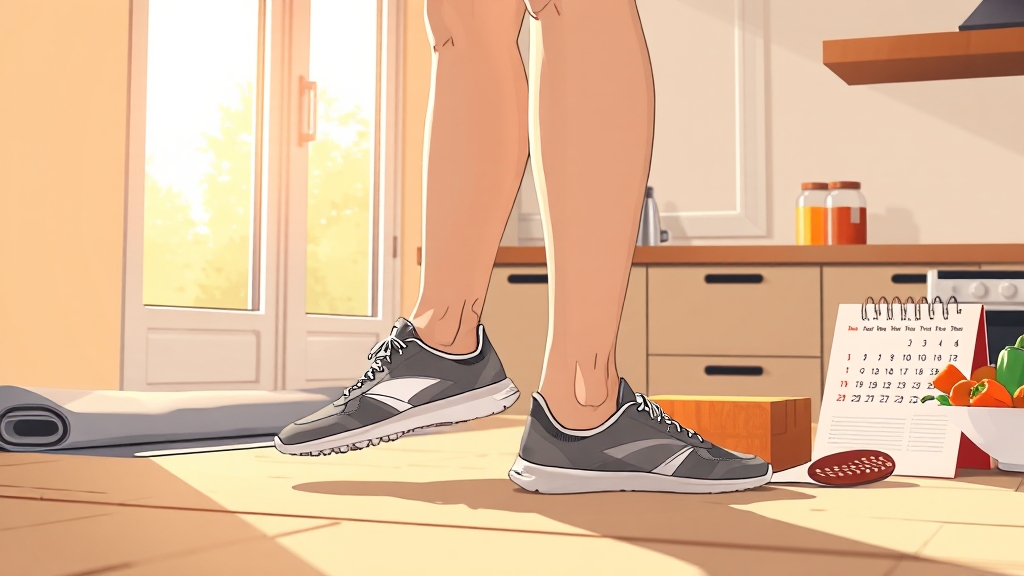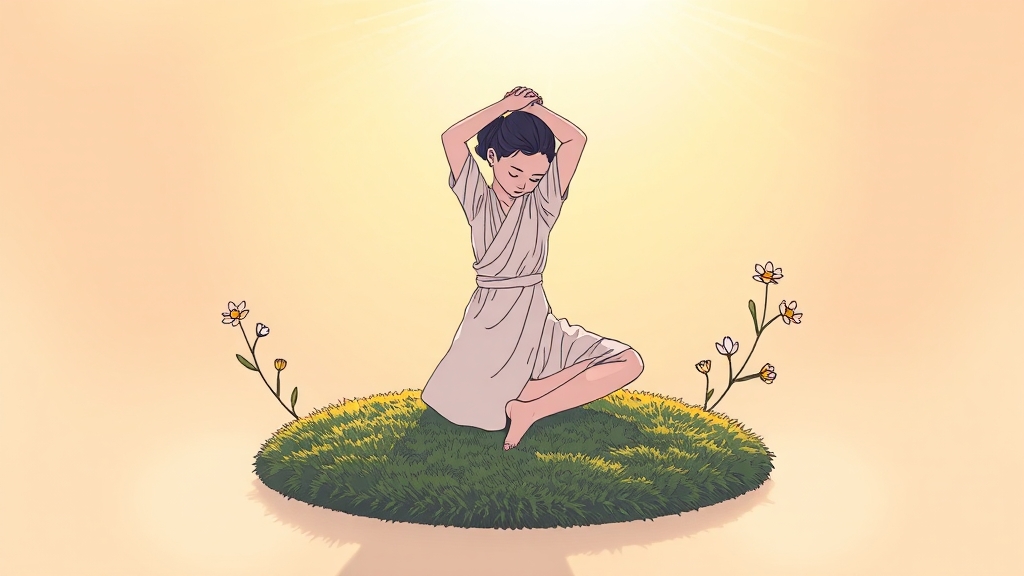Are you suffering from plantar fasciitis? We introduce stretching exercises and management methods for heel pain relief. This comprehensive guide covers everything from causes to effective stretches and daily management habits for plantar fasciitis relief.
Why Does Plantar Fasciitis Occur?

Plantar fasciitis is a common condition that causes heel pain. It occurs when the plantar fascia becomes stiff or damaged, leading to inflammation and pain. If you feel stabbing pain when taking your first steps in the morning or after sitting for long periods, you might suspect plantar fasciitis.
What Causes Plantar Fasciitis?
It occurs when excessive stress is placed on the plantar fascia. Jobs requiring prolonged standing, being overweight, and having flat feet can be risk factors. Sudden increases in exercise intensity or wearing inappropriate shoes can also be contributing causes!
Don't Ignore Plantar Fasciitis!
The pain tends to worsen during walking, and in severe cases, it can cause significant discomfort in daily life. Initially, it's easy to mistake for fatigue, so it's important to see a specialist if pain persists. Early detection and appropriate treatment are greatly beneficial for plantar fasciitis recovery.
Plantar Fasciitis: Stretching is the Answer!

Stretching for plantar fasciitis relief is essential for pain reduction and foot function recovery. Learn about stretching methods you can consistently practice and create your own routine.
Foot Massage: Release Those Tight Muscles!
Place a tennis ball or massage ball under your foot and roll it around. Focus on the painful area and massage each foot for 1 minute. This helps release tight muscles and improve blood circulation.
Towel Stretching: Relax the Plantar Fascia!
Sit on the floor with your legs extended, place a towel around your foot, and hold both ends with your hands. Pull your foot toward your body and hold for 15-30 seconds, repeat 3-5 times. This gently relaxes the plantar fascia and helps relieve pain.
Toe Pulling: Direct Plantar Fascia Stimulation!
This is a stretch where you grab your toes with your hand and pull them toward your body. Repeat for 15-30 seconds, 3-5 times to directly stretch the plantar fascia. This increases plantar fascia flexibility and reduces pain.
Calf Stretching: Relax Connected Muscles!
Stand facing a wall, step one foot back, and keep your heel on the ground. Bend your front knee while stretching for 30 seconds, alternating between both feet. Calf muscle relaxation reduces the burden on the plantar fascia.
Post-Stretch Ice Treatment: Anti-inflammatory Effect!
After stretching, apply ice for about 10 minutes. This helps reduce inflammation. Consistent stretching and ice treatment create a synergistic effect for plantar fasciitis relief.
Using Towels & Walls: Boost Stretching Effects!

Stretching using towels and walls are effective methods you can easily follow at home. Consistent practice can provide significant help in relieving plantar fasciitis pain.
Towel Stretching: Try This Way!
Sit on the floor with your legs extended, place a towel around your foot, and hold both ends with your hands. Pull the towel while gently pulling your foot toward your body, hold for 15-30 seconds, repeat 3-5 times. It's more effective when done consistently morning and evening.
Wall Push Stretching: Refreshing for Calves Too!
Face the wall, extend one leg back, and keep your heel on the ground. Push against the wall with your hands while feeling the stretch in your calf muscles and heel. Hold for 15-30 seconds, repeat 3-5 times.
Combine Foot Massage: Maximize Effects!
Place a tennis ball or massage ball under your foot and roll it back and forth. This helps release foot muscles and promotes blood circulation, aiding pain relief. It's even better when practiced consistently along with stretching.
Expert Recommended! Toe Pulling Stretch

Toe pulling stretches directly relax the plantar fascia, helping to relieve pain. It has the advantage of being easily done while sitting or standing.
Toe Pulling: Do It This Way!
Sit or stand comfortably, and gently grab the toes of your painful foot with your hand. Slowly pull your toes toward your body. It's important to maintain an intensity that feels comfortably stretching.
Hold for 15-30 Seconds, Repeat 3-5 Times!
Maintain this position for 15 to 30 seconds while focusing on the feeling of the plantar fascia gently stretching. Don't forget to breathe deeply while releasing muscle tension. Repeating 3 to 5 times makes it more effective.
Calf Muscle Stretching Effect Too!
Toe pulling stretches affect not only the plantar fascia but also the calf muscles. Consistent practice helps not only relieve heel pain but also improve foot flexibility.
Stretching: Important Precautions!

Before starting plantar fasciitis stretching, you need to remember several important points. Stretching without proper knowledge can actually worsen the condition.
Pre-Stretch Ice Treatment: Boost Effects!
Applying ice before stretching helps reduce foot inflammation and relax muscles, enhancing stretching effects. Don't forget to ice before stretching.
Stretch Slowly and Gently!
When stretching, it's important not to apply sudden excessive force but to stretch slowly and gently. If you feel pain, stop immediately. Excessive stretching can have adverse effects.
Listen to Your Body's Signals!
Don't forget to listen to your body's signals. Foot pain may worsen with weather changes, and during these times, it's better to rest rather than force stretching.
Daily Pain Management Habits: Amazing Tips Revealed!

Just as important as stretching is improving daily life habits. Small habit changes can be a great help in relieving plantar fasciitis pain.
Cushioned Shoes: Essential Item!
Wear shoes with good cushioning to support your foot arch. Replace worn shoes regularly, and it's best to avoid high heels or flat shoes as much as possible.
Regular Stretching: Consistency is Key!
Don't forget to stretch your soles and calves every morning, evening, and after sitting for long periods. Foot massage and ice treatment also help.
Weight Management: Reduce Foot Burden!
Being overweight increases the burden on your feet, which can worsen plantar fasciitis symptoms. Maintaining an appropriate weight is important.
Foot Muscle Strengthening Exercises: Prevent Plantar Fasciitis!
Repeatedly picking up towels with your toes or spreading and contracting your toes strengthens foot muscles. This helps prevent plantar fasciitis.
Preventing Recurrence: Long-term Management is Important!

Plantar fasciitis has a high possibility of recurrence even after recovery, so consistent management habits are important. A long-term approach is necessary to avoid suffering from pain again.
Shoe Selection: Choose Carefully!
Wear athletic shoes with good shock absorption, and using arch-supporting insoles together is more effective. Replace worn shoes regularly.
Pre-Exercise Warm-up: Essential!
Develop a habit of loosening the plantar fascia with light warm-up exercises before exercising. Foot massage or ice treatment also helps.
Weight Management: Consistently!
Being overweight increases the burden on your feet, so maintaining an appropriate weight is good. Manage your weight with a healthy diet and regular exercise.
Goodbye Plantar Fasciitis!

Plantar fasciitis is a condition that can be fully overcome with consistent management and effort. Consistently practice these stretching methods and maintain proper habits to regain healthy feet!
Frequently Asked Questions
What are the main causes of plantar fasciitis?
Plantar fasciitis is primarily caused by excessive stress on the plantar fascia, with risk factors including jobs requiring prolonged standing, being overweight, flat feet, and wearing inappropriate shoes.
What are the most effective stretches for plantar fasciitis pain relief?
Foot massage, towel stretching, toe pulling, and calf stretching are effective for plantar fasciitis pain relief. Consistent practice is important.
How can I manage plantar fasciitis pain in daily life?
Wearing cushioned shoes, regular stretching, foot massage, ice treatment, and weight management help manage plantar fasciitis pain in daily life.
What are long-term management strategies to prevent plantar fasciitis recurrence?
Wearing shock-absorbing shoes, using arch-supporting insoles, warming up before exercise, consistent stretching, and maintaining appropriate weight help prevent plantar fasciitis recurrence.
What should I be careful about when stretching for plantar fasciitis?
Key precautions for plantar fasciitis stretching include ice treatment before stretching, stretching slowly and gently, stopping immediately if pain occurs, and listening to your body's signals.
